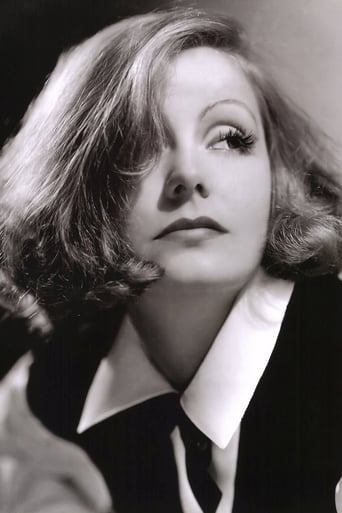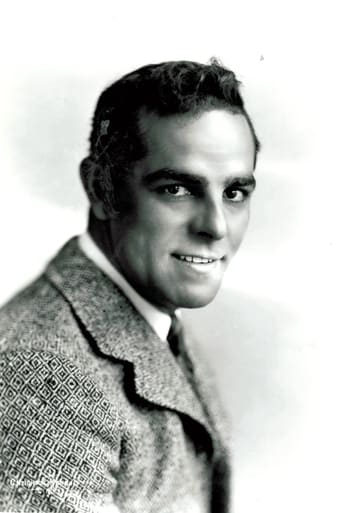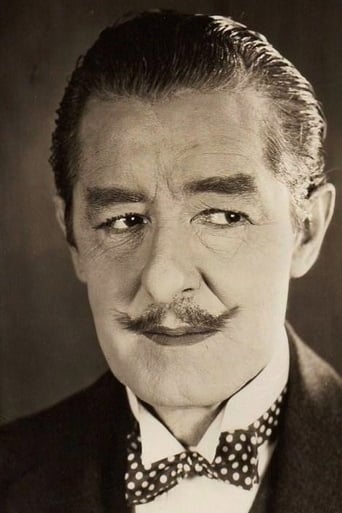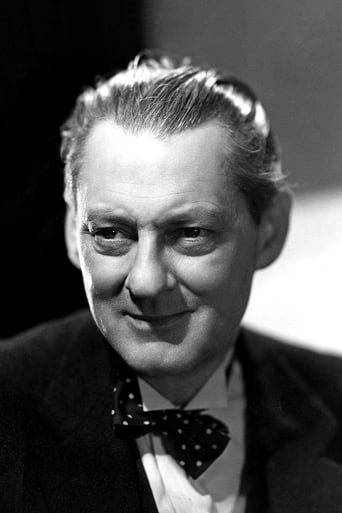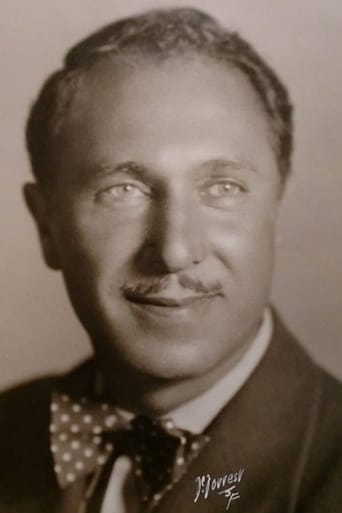AniInterview
Sorry, this movie sucks
Stometer
Save your money for something good and enjoyable
SpuffyWeb
Sadly Over-hyped
BelSports
This is a coming of age storyline that you've seen in one form or another for decades. It takes a truly unique voice to make yet another one worth watching.
Marcin Kukuczka
"The Temptress has now been shown here—terrible. The story, Garbo, everything is extremely bad. It is no exaggeration to say that I was dreadful. I was tired, I couldn't sleep and everything went wrong..." (Greta Garbo)The roaring twenties...not a very enthusiastic quotation, particularly when we consider the fact its author is Garbo herself, the Garbo people flock to see as a vamp, as a femme fatale who wins and ruins men, as a beauty on the screen, an object of dreams and desires. And so has the driving force been for all these years - I doubt whether THE TEMPTRESS would be watched by anyone nowadays ... if it were not for GARBO. However, she detested it and no wonder why...For most people who know Garbo's psyche a bit, her melancholy her moments of peace, moments of being 'let alone' and, moreover, what a period it was (the mid 1920s) in her career are close to understand how she must have felt: director Mauritz Stiller, her tutor and a person who taught her skills, who directed her in Swedish GOSTA BERLING SAGA (1923) and brought her to America, is fired just a few days after the production begins; she still does not understand/speak English so well and intuitively learns whom to consider 'familiar soul' among many 'foreigners' in the glossy and tremendous studio that MGM was at the time. What is more, her sister Alva dies in the faraway Sweden. And no wonder she writes the aforementioned bitter words to her friend in Stockholm Lars Saxon. But, the test of time shows something more optimistic and within the variety of opinions and MGM targets of the 1920s, THE TEMPTRESS is overall not that bad as a movie... The CONTENT...Marked by spiritual/religious references at the beginning and at the end (from Rabindranath Tagore, the first non-European Nobel laureate to Jesus Christ, the Saviour of the world who died for love and manifests his presence in the people in need), the content is visibly the product of MGM studio system and its methods: goodness vs evil clash that uprights the hearts: love that conquers hatred and reconciliation that overcomes vengeance. As it is quite a common theme for films of the time, I would highlight more the technical aspects of the movie some of which appear to be more convincing and more appropriate in this relation. The TECHNICAL MERITS appear, of course, thanks to the people Garbo liked and worked with.The direction by Fred Niblo, famous for his silent BEN HUR but also for a later Garbo film, THE MYSTERIOUS LADY, is a subtle work filled with stylish moments and delicate as well as thrilling handling of scenes. Although he replaced Stiller, her "sole tutor and companion," (whose style was quite remarkable but different from what they did and understood in Hollywood), she must have felt pretty comfortable under Niblo's direction as she left him a touching note after the work had finished. The lighting by William Daniels, a crucial name of all Hollywood Garbo films, boasts of truly remarkable moments. The effect is no lesser than in greater films, in particular when filming Garbo's face. Consider the scene at the mirror, for instance...indeed, most of what we see of Garbo and her acclaimed "performance for the camera" we owe to Daniels. He captured that essence of her sensitivity to light and shadow as portrait photographer Sinclair said: "Garbo 'feels' the light." And...production by Irving Thalberg, perhaps he did not play that role as in later cooperation with Garbo, but, undeniably, prompted the energy and unbelievable possibilities from the inside of the Swedish Sphynx. As a result, Garbo's portrayal of intriguing Elena is worth appreciation.And here arises a tricky but a logical question: So why isn't THE TEMPTRESS considered to be a significant GARBO SILENT FILM? First, Garbo is the best vamp in FLESH AND THE DEVIL; second, her best leading man is John Gilbert (one of the most famous pairing the screen has ever seen); third, the most 'exotic' and arousing locations are in WILD ORCHIDS; fourth, Garbo's most magical moments are in A WOMAN OF AFFAIRS; fifth, the lighting pearls are in THE MYSTERIOUS LADY (particularly its 'candle sequence'; sixth, THE TEMPTRESS was not viewers' first fascination with Garbo because her Hollywood debut is not THE TEMPTRESS but THE TORRENT. So... this film has been bound for years to negligence (nothing special for many). However, it occurs to be undeserved and unfair...Antonio Moreno is not bad as her leading man...has his moments at least; some of the supporting cast do fine jobs, including Lionel Barrymore as Canterac who appears, years later, in a specific talkie with Garbo, GRAND HOTEL; some scenes can boast of brilliant camera-work (just to mention the witty and visual banquet at Fontenoy's or the presentation of the Argentine); many moments can boast of thrill, including the Argentine fight between Robledo (Antonio Moreno) and the wicked Manos Duras. Except for many clichés noticeable in the film, which, certainly, lower its value, it is important to consider such atmospheric scenes like the masquerade.Although detested by the main STAR of the film, by the leading lady who was unique and brilliant at multiple levels, THE TEMPTRESS is not so bad. Garbo alone helps us get rid of some sophisticated expectations from the content. As a matter of fact, more of her films do not boast of particularly clever content...yet, EVERY Garbo film is worth seeing because of her tremendous presence on the screen, the unforgettable magic and something really special which she offered the cinema of her time and the cinema of all periods. See this silent film AFTER you have seen hyper-sensual FLESH AND THE DEVIL, subtle A WOMAN OF AFFAIRS, refreshing THE SINGLE STANDARD, innovative THE KISS, stunning THE MYSTERIOUS LADY but allow yourself at least a single viewing of its beautifully restored DVD version. You will not be disappointed.
finki
For some reason, Cedric Gibbons art direction succeeds in the scenes that take place in Paris but notably fail when he has to deal with Argentina. The opening and closing scenes are so impressive that it is really a shame that MGM was so careless about how this film should look.Written Vicente Blasco Ibáñez knew Argentina quite well and if most of the exteriors that take place there look like interiors. The villain as portrayed by Roy D'Arcy is ridiculous: he is ready to go to a carnival parade and does not remotely look menacing as probably Blasco Ibáñez described him on his book.Even with those flaws, it is interesting to compare the story with the tangos that were composed in Argentina at the time.Garbo's character is tragic figure and the men who would either die or kill for her are quite as pathetic as many people described in tangos.With all of its flaws, this film is worth watching and perfectly reflect many clichés that were frequent in the Argentina of that time. The music score specially composed for TCM by Michael Picton was very good, although the results would have been much better adopting contemporary Argentinean folkloric music.The alternate ending featured in DVD (obviously produced for Argentina unlike what Mark A. Vieira states on the audio commentary, since this films was probably one of the firsts that MGM distributed there) is more satisfying than the melodramatic finale of the original version.
whpratt1
Over the years I have seen pictures with Greta Garbo and thought she had that very special talent that brought her to such fame years ago; the so-called Pin Up Girl of the early 20's and 30's. After viewing this film, I could actually enjoy Greta Garbo playing( Elena,),"Anna Christie",'31, and truly see her great acting skills in action as she played her role as an evil woman who drained men like a spider, spinning a web for every man she decided to claim as a lover. The expressions in her face and eyes were acting all the time and she also had a great cast of supporting actors. If you looked close, you could see a very young Lionel Barrymore,(Conterac),"The Bells",'26, not sitting in a wheel chair like in "Key Largo", but straight and tall. This is truly a great Classic Film from the Silent era and very worth while viewing.
lugonian
THE TEMPTRESS (Metro-Goldwyn-Mayer, 1926), personally directed by Fred Niblo, from the novel by Vicente Blasco-Ibanez, stars Swedish actress Greta Garbo in her second Hollywood production, following her American debut in THE TORRENT (1926), and the first to place her name on top of the casting credits. As with her MGM debut, Garbo plays a girl of Spanish origin (this was the last to do so), and like so many films that were to follow, especially during the silent era and early talkies, she would portray a woman (usually unhappily married) who satisfies her emotions with illicit affairs, finding the one man she truly cares about, and destroys those around her before reaching bottom herself, committing suicide, or both. THE TEMPTRESS would set such a pattern.The story opens in Paris at a masquerade party where the unhappy Elena (Garbo) meets Manuel Robledo (Antonio Moreno), an Argentine engineer. After removing their masks, they fall in love under the stars. Later when he comes to visit his friend, Marques De Torre Bianca (Armand Kaliz), Manuel is stunned to learn that his wife happens to be Elena. At the dinner party, Marquis Fontenoy (Marc MacDermott), a middle-aged banker permitted by Bianca to have Elena be his mistress in order for them to be financially secure, distracts the guests by making a startling speech on how Elena, the temptress, has ruined his life, and dropping dead at the table after taking his drink of poison. Disgusted by the ugly truth, Manuel decides to forget Elena by leaving for the Argentine where he accepts a water dam building project. Just as Manuel is slowly forgetting Elena, she arrives with her husband, and by doing so, causes frustration and destruction to both men, and others as well, with Manuel, who feels she to be responsible for the murder of his friend and husband, as well as the near destruction of his dam dynamited by his enemy, finds he still cannot resist her.The supporting players include Lionel Barrymore as Canterac, one of the construction workers who falls victim to Elena; Robert Anderson as Pirovani, the friend Canterac kills because of Elena; and Virginia Browne-Faire as Celinda, the pretty young girl who silently loves Manuel. Adding to sin and destruction is Roy D'Arcy as Manos Duros, the bandit leader, in a menacing performance as Manuel's arch enemy who, after forcing his intentions on Elena, is challenged by Manuel to a duel, with the bandit's method being the use of whips. The bull whip duel is one of the high points in the story, resulting to whip scars on the bare torsos covered with blood, as well as Manos, who fights dirty, aiming for the eyes, being quite graphic for its time.THE TEMPTRESS, an important project that helped advanced the screen career of Greta Garbo, at long last, premiered January 24, 2005, on Turner Classic Movies cable channel, accompanied by a new score composed by Michael Picton. Scoring a silent movie is challenging, as mentioned in the half hour special that preceded the movie, and minutes into watching THE TEMPTRESS, the result of Picton's work is satisfactory and rewarding. In spite the fact that host Bob Osborne announced THE TEMPTRESS as making its world television premiere, it actually did play on television, but many years ago. THE TEMPTRESS was one of the selected 13 silent films shown weekly on the public television series in commemoration of MGM's fifty years titled "Movies-Great-Movies," (WNET, Channel 13, in New York City from August to October of 1973) hosted by Richard Schickel, movies accompanied by an an orchestral score (and in the New Jersey area as part of the 1974 series, "Films of the Gatsby Era," with same movies, different hosts, on WNJM, Channel 50). THE TEMPTRESS, which premiered in New York City August 13, 1973, made its final TV run on WNET in May of 1978 as part of the double bill five week movie tribute to Garbo and Katharine Hepburn. Schickel, as did Osborne, talked about how Garbo's discoverer, Mauritz Stiller, started out as the film's director, but due to complications during production, was replaced by Fred Niblo. The information regarding THE TEMPTRESS remains the same, with the exception of its time length. When shown in the 1970s, the running time was about 114 minutes. TCM's print runs at 105. But regardless of its length, possibly due to projection speed, THE TEMPTRESS is a welcome addition to the TCM lineup, and well worth viewing again after many years or the first time ever. While THE TEMPTRESS belongs to Antonio Moreno, whose name is almost forgotten today, it owes its success to the temptress herself, Greta Garbo, which is the sole reason for its rediscovery. (***)
